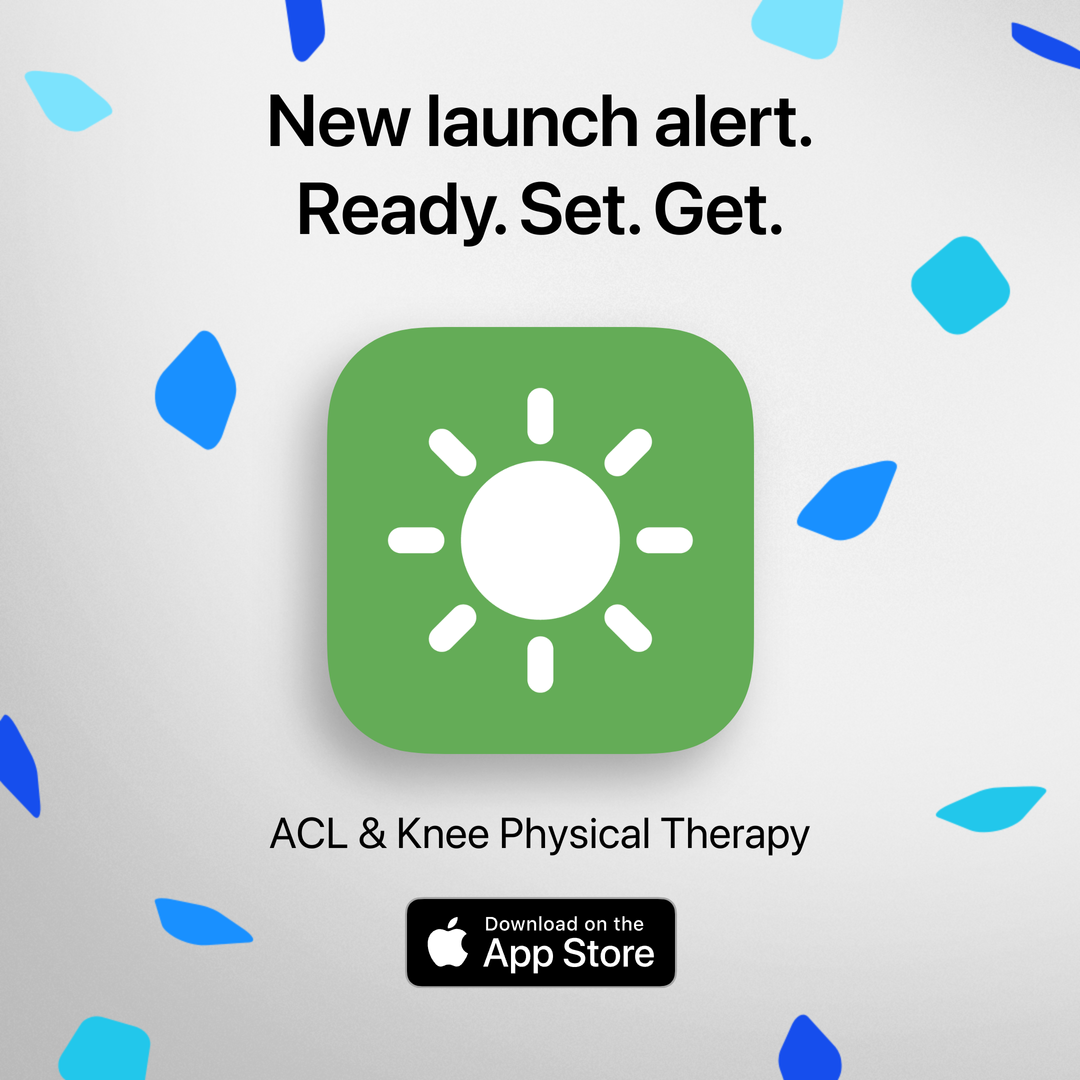There are many factors that contribute to how a person will recover after ACL surgery. The 4 major factors for recovery are listed below. The first 2 are things you can control or work on to improve your recovery. The last 2 are factors that you do not have control over.
1. Ability to bend the knee fully before surgery
A study that looked at factors affecting recovery after ACL surgery found that people who were able to bend their knee all the way before surgery had faster recoveries than those who could not bend their knee all the way.[1] Fortunately, physiotherapy treatment can help improve your ability to bend your knee before and after surgery. Our app, Curovate, can help you improve your knee motion before and after surgery.
2. Strength of muscles around the knee
The strength of the muscles that move the knee can predict the recovery time. The faster the injured knee regains strength equal to the unaffected knee after surgery, the better the outcome is 1 year later.[2] It's particularly important to regain strength in the hamstring muscles which are at the back of your thigh and help with bending your knee. Weak hamstring muscles increase the risk of re-injuring the ACL.[3] The exercises in our physical therapy app can help restore your strength.
3. Age
You may have heard before that young people heal much faster than older people. This happens to be the case when it comes to ACL surgery and getting back to all of your activities. Surgery is sometimes avoided in older people because of a higher complication rate compared to younger people.[4] A study on 104 patients that underwent ACL surgery found that 12 months after ACL surgery, patients who were 20 years old or younger needed less rehabilitation time than patients over 20 years old. The younger patients had less pain, less swelling, better mobility, and strength and returned back to their normal level of activity faster.[5]
4. Other injured structures in the knee
There are 4 major ligaments that stabilize the knee: ACL, PCL, MCL, and LCL. The ACL can be injured alone but in more severe injuries, other structures can be torn as well. One study showed that patients who had torn multiple ligaments had a longer recovery time compared to just tearing their ACL alone. This is because multiple ligament injuries might require more procedures, have more pain and symptoms, and also require more time before the patient can move after surgery.[5]
Other common factors that have been studied with regards to how a person will recover from ACL surgery include gender, body mass index (BMI - a ratio of height to weight), and type of ACL graft used. These factors do not have a strong influence on the rate of recovery.[6]
Conclusion
There are 4 major factors that influence the recovery time after ACL surgery. The two factors that are in your control are your knee mobility, also called knee range of motion, and the strength of the muscles around your knee prior to your surgery. The two factors that also influence how fast you recover after ACL surgery that you do not have control over are your age and if other structures in the knee were damaged at the same time as the ACL injury. As you may have guessed people who are older and have injured other structures besides the ACL take longer to recover after an ACL surgery.
If you want to make sure that you are doing everything that you need to do to recover after an ACL injury or ACL surgery try our physical therapy app, Curovate. Our app provides you with daily video guided exercises based on evidence-based recovery and allows you to measure your knee range of motion with just your phone. Curovate also tracks your recovery progress, provides you with access to insightful blogs like this one and educational webinars to help you with your recovery.
If you need further customized assistance during your ACL recovery check out our Virtual Physical Therapy page to book your 1-on-1 video session with a physical therapist.


Other Blogs Related to ACL Surgery and Rehabilitation
- Why do I feel weak after surgery?
- How to become more consistent with your exercise program using curovate
- ACL recovery timeline
- Is my ACL graft weaker than my original ACL or is my ACL graft stronger than my original ACL?
- When can I return to sport after ACL injury or surgery?
- Is there a difference in what I need to do if I had a quad tendon graft compared to a patellar tendon graft for my ACL reconstruction?
References
- Scherer, J. E., Moen, M. H., Weir, A., Schmikli, S. L., Tamminga, R., van der Hoeven, H. (2016). Factors associated with a more rapid recovery after anterior cruciate ligament reconstruction using multivariate analysis. Knee 23, 121-126.
- Villa, F. D., Ricci, M., Perdisa, F., Filardo, G., Gamberini, J., Caminati, D., & Villa, S. D. (2015). Anterior cruciate ligament reconstruction and rehabilitation: predictors of functional outcome. Joints 3, 179-185.
- Hewett, T. E., Di Stasi, S. L. & Myer, G. D. (2013). Current concepts for injury prevention in athletes after anterior cruciate ligament reconstruction. Am J Sports Med 41, 216-22.
- Legnani C, Terzaghi C, Borgo E, Ventura A. Management of anterior cruciate ligament rupture in patients aged 40 years and older. Journal of Orthopaedics and Traumatology : Official Journal of the Italian Society of Orthopaedics and Traumatology. 2011;12(4):177-184.
- Della Villa F, Ricci M, Perdisa F, et al. Anterior cruciate ligament reconstruction and rehabilitation: predictors of functional outcome. Joints. 2015;3(4):179-185.
- Anderson MJ, Browning WM, Urband CE, Kluczynski MA, Bisson LJ. A Systematic Summary of Systematic Reviews on the Topic of the Anterior Cruciate Ligament. Orthopaedic Journal of Sports Medicine. 2016;4(3).








